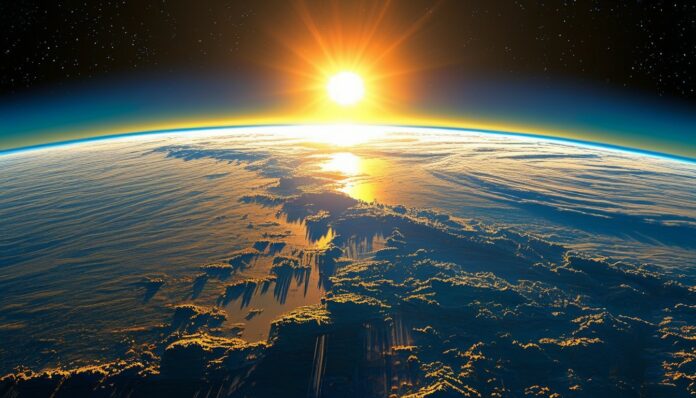The Solar System is the most studied planetary system in the Galaxy, as it is humanity’s “home.” But where does the edge of the Solar System lie? Have spacecraft reached this boundary? Let’s try to understand!
Scattered Disk: Material Boundaries of the Solar System
It is worth distinguishing between material and immaterial boundaries of the Solar System. Material boundaries include planets, asteroids, cosmic dust, and other objects visible through a telescope. These boundaries are relatively easy to identify.
The Solar System comprises 8 planets and objects beyond Neptune’s orbit. Beyond Neptune lies the Kuiper Belt, resembling a cloud of asteroids and other small objects. These objects remained after the formation of the other planets of the Solar System and were pushed to its edges by centrifugal force.
If we go beyond the Kuiper Belt, we encounter a disk of ice fragments. Moreover, the farther we move from the Sun, the smaller these fragments become. The orbit of the disk, including the planets, the Kuiper Belt, and the icy fragments, has a diameter of about 15 billion kilometers. Beyond that, there are no physical objects; essentially, the Solar System ends with microscopic ice fragments. However, it has an intangible extension.
Solar Influence and Invisible Boundaries
Considering the spatial boundaries influenced by the central star, the boundaries of our cosmic home expand significantly.
The Sun emits a plasma flow, or solar wind, at speeds exceeding 1000 kilometers per second. The farther we move from the Sun, the slower this wind becomes. The boundary at which the wind pressure equals the pressure of interstellar space is called the heliopause. The solar wind finally ceases at a distance of 230 astronomical units from the Sun. This boundary can be considered the true edge of the Solar System.
Have Spacecraft Reached the Solar System Boundary?
As of now, the American spacecraft Voyager 1 is located approximately 120 astronomical units from the Sun. Voyager 1 was launched over 30 years ago. During all this time, it has been rapidly moving away from Earth. However, the spacecraft has not yet left the boundaries of the Solar System. Most likely, it will not escape the heliosphere for another 30-50 years.
It was expected that Voyager 1 would leave the Solar System much earlier. Astronomers believed that the ionized “bubble” created by solar wind should have dissipated several years ago. But Voyager 1 is still experiencing its effects. Thus, our system is much larger than previously thought.
Some scientists believe that Voyager will not be able to leave the Solar System for several centuries. According to some calculations, the gravitational influence of the Sun extends over a vast distance, and Voyager will remain within its bounds until at least 2300. But even if it happens sooner, we won’t know about it, as communication with Voyager will cease long before.
“Space Surprise” for Other Civilizations
A few words about Voyager 1. The spacecraft’s initial mission was to explore Jupiter and Saturn. Voyager 1 managed to capture the first high-quality images of both planets. Afterward, Voyager set off beyond the Solar System. Surprisingly, scientists hope that it will establish contact with extraterrestrial civilizations.
If aliens intercept Voyager, they are in for a pleasant surprise. The spacecraft contains discs with recordings of human speech, sounds of rain and waves, and music by Bach and Mozart. The information is encoded in a way that advanced civilizations capable of understanding binary or decimal systems will comprehend.
In 2025, the radioactive fuel aboard Voyager will be depleted. After that, the spacecraft will lose contact with our planet and embark on a solitary journey. Even if extraterrestrials manage to detect this speck in the vast cosmos and decipher Earth’s message, we won’t receive a response for several decades.
Humanity knows too little about its own cosmic “cradle.” We don’t even know exactly where it ends. Calculations are proven wrong, and new facts about the extent of Solar Wind gusts are discovered constantly. Therefore, we can expect a wealth of discoveries that could change humanity’s perception of our familiar Solar System.
